Tina Tsiskarauli
New Hospitals
Georgia
Abstract Title: Beyond the Lung Fields: A Case Report Highlighting the Diagnostic Challenge of Diaphragmatic Hernia in Pediatrics
Biography: Tina Tsiskarauli is a pediatric resident at Tbilisi State Medical University and currently works as a junior doctor in pediatrics at New Hospitals. Tina has presented clinical cases at international pediatric conferences and is a member of the European Respiratory Association. Tina is passionate about rare pediatric emergencies and committed to enhancing diagnostic accuracy in frontline clinical settings through continuous education and collaboration.
Research Interest: Recurrent pneumonia in pediatric patients often prompts investigation for infectious, allergic, or immunodeficiency-related causes. However, when standard treatments fail to resolve symptoms, clinicians must broaden the diagnostic scope to include rare congenital anomalies. This case illustrates an unusual presentation of a congenital diaphragmatic hernia (CDH) diagnosed beyond the neonatal period. An 8-year-old child presented with multiple episodes of left-sided pneumonia over several months, each managed with antibiotics but with limited and temporary improvement. Clinical examination and chest X-ray suggested persistent pulmonary consolidation. In view of symptom recurrence, cross-sectional imaging with chest CT was performed, revealing a left-sided “Bochdalek hernia” with herniation of abdominal contents—including the small bowel and colon - into the thoracic cavity. This anatomical defect was responsible for the chronic lung compression and misleading radiologic findings. The patient was referred for surgical correction. This case underscores the diagnostic challenge posed by atypical CDH in older children and emphasizes the critical role of advanced imaging in evaluating unexplained or recurrent respiratory symptoms. Timely recognition of such conditions is essential to avoid misdiagnosis, guide appropriate management, and prevent long-term pulmonary compromise.

